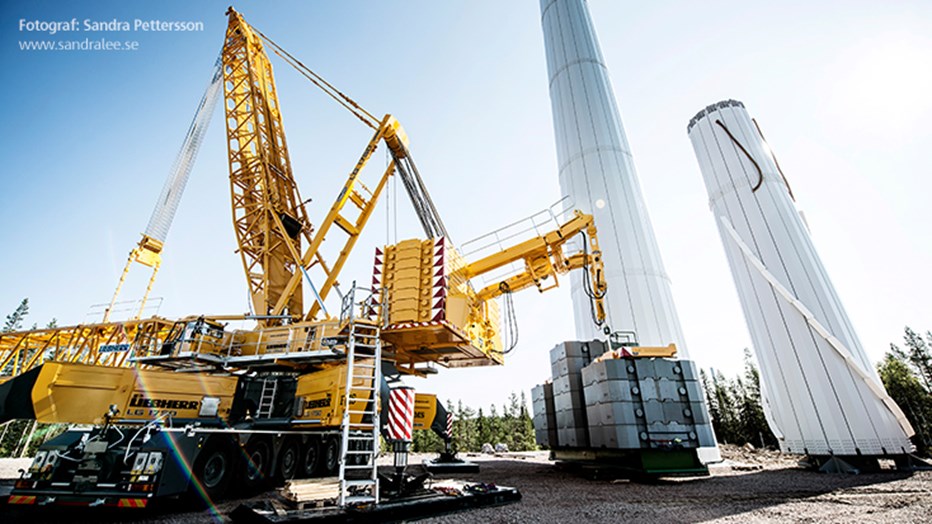Wind farm with green ambitions
In collaboration with Jämtkraft, Skanska has built Mullberg Wind Farm. It is located in Rätan in Berg’s municipality and is one of the larger wind farms in Jämtland. The wind farm generates an annual production of approximately 247,000,000 kilowatt-hours.
The project was a collaboration between Skanska and Jämtkraft regarding financing, construction and operation. Jämtkraft has experience in electricity generation, electricity trading and electricity grids, while Skanska can contribute with experience in construction and design.
Preliminary study was conducted
The plans to build a wind farm in Mullberget have been in the works for a number of years. Back in 2009, Svenska Vindbolaget conducted a preliminary study for a wind farm in the area. A permit application was submitted in 2010 and approved in 2011.
In September 2012, Skanska Infrastructure Development and Jämtkraft acquired Mullbergs Vind AB and the real work could begin.
The worksite was located near the E45 motorway, which served as a convenient transport route for equipment and deliveries. Once off the E45, however, we had to reinforce old roads and build new roads leading to Mullberget. In conjunction with the beginning of roadwork, we also connected the worksite to the nearest power plant to ensure a connection to the national electricity grid. Clearing of the worksite began in the autumn of 2012. Throughout the project, we have been careful not to clear more trees than was absolutely necessary.
The wind farm is located in the hills surrounding Mullberget, where the annual average wind speed is seven meters per second. The wind turbines, which produce electricity at four meters per second, are expected to generate an annual production of approximately 247,000,000 kilowatt-hours.
Smart foundation work reduced carbon emissions
Sustainability has been prioritized throughout the whole project. The vision for the Mullberg Wind Farm was to be built and operated in harmony with nature, and we hope that the project will serve as a model for how to create renewable energy in a sustainable and cost-efficient manner.
Work on the foundations for the 26 wind turbines began in November of 2012. In order to reduce the amount of concrete and reinforcements needed, the foundation was cast in an annular form, which was later filled with gravel. This enabled us to use less concrete and thus reduce the total level of carbon emissions by a full 30 percent.
Thanks to a mild winter with very little snow, we were able to continue working during the winter months of 2012 and successfully completed the necessary electrical work and laying of cables.
The 26 foundations were completed in the summer of 2013 and Siemens, which is responsible for the wind turbines, was able to start raising the towers.
Green worksite and local labor
Our goal throughout the project has been to minimize our environmental impact, and the wind farm has been classified as a green worksite according to Skanska’s ISO 14001 certification. This means that we are expected to meet strict requirements with respect to emission levels, energy-efficient lighting, chemical use and garbage sorting.
We have also aimed to use local labor. A total of about 100 employees have been involved in the project, most of whom are from the local area. Once complete, the wind farm had generated approximately ten full-time positions.
Vision – zero worksite accidents
Safety is always a top priority in our projects and the work on Mullberg Wind Farm was no exception. From the very beginning of the project, the issue was emphasized in our contacts with employees in order to make everyone aware of the risks associated with constructing a wind farm.
Mullberg Wind Farm was completed in the spring of 2014. A total of 26 Siemens SWT 113–3.0 MW turbines were established with a total height of a maximum of 180 meters. The wind farm is expected to supply green electricity to 50,000 households in 25 years. The green electricity contributes to a substantial reduction in carbon emissions.










